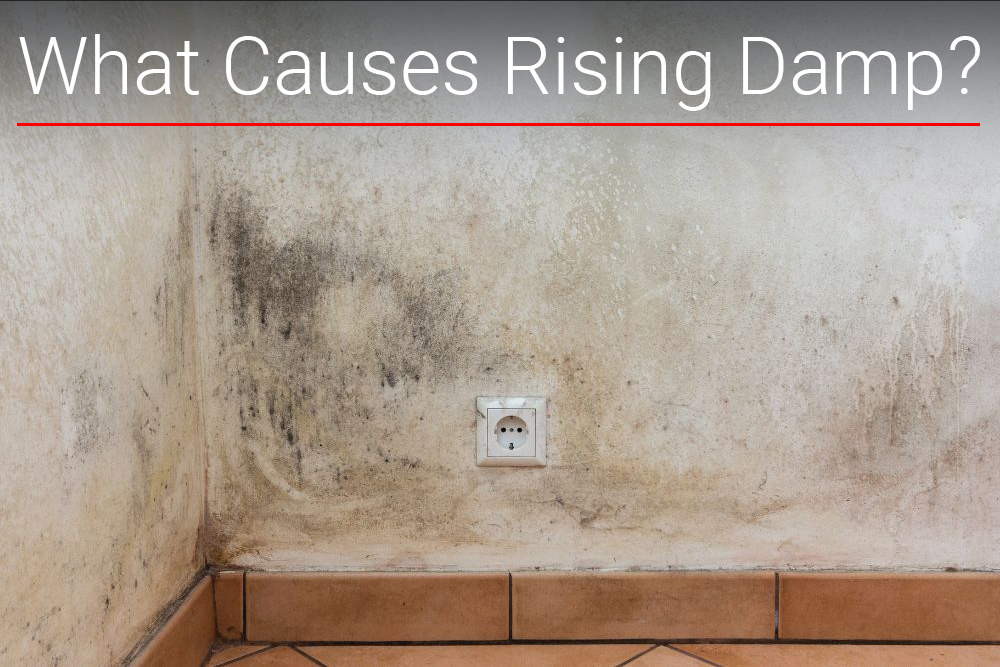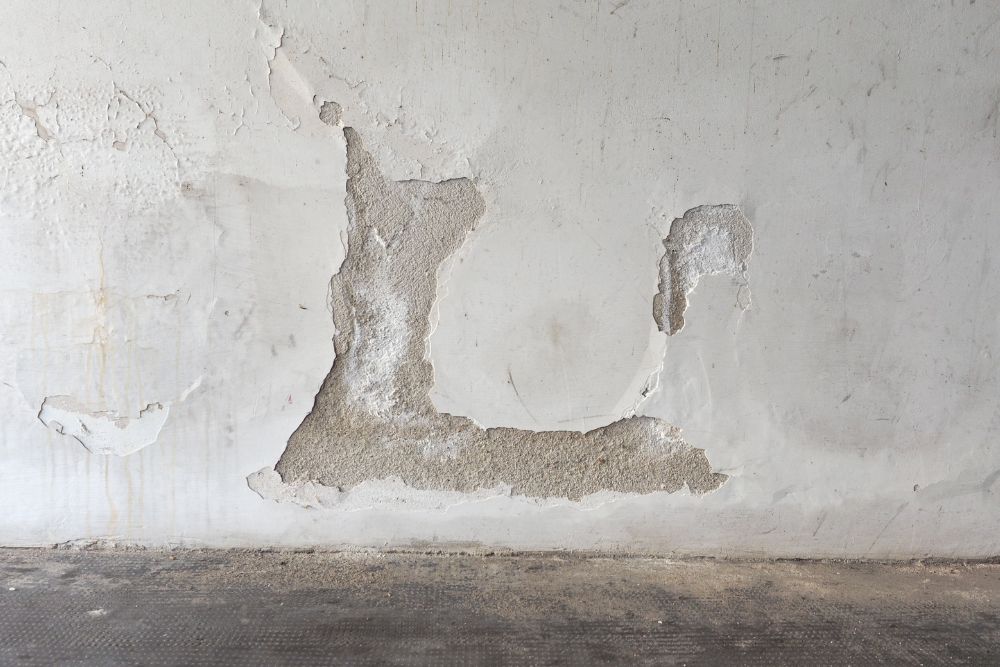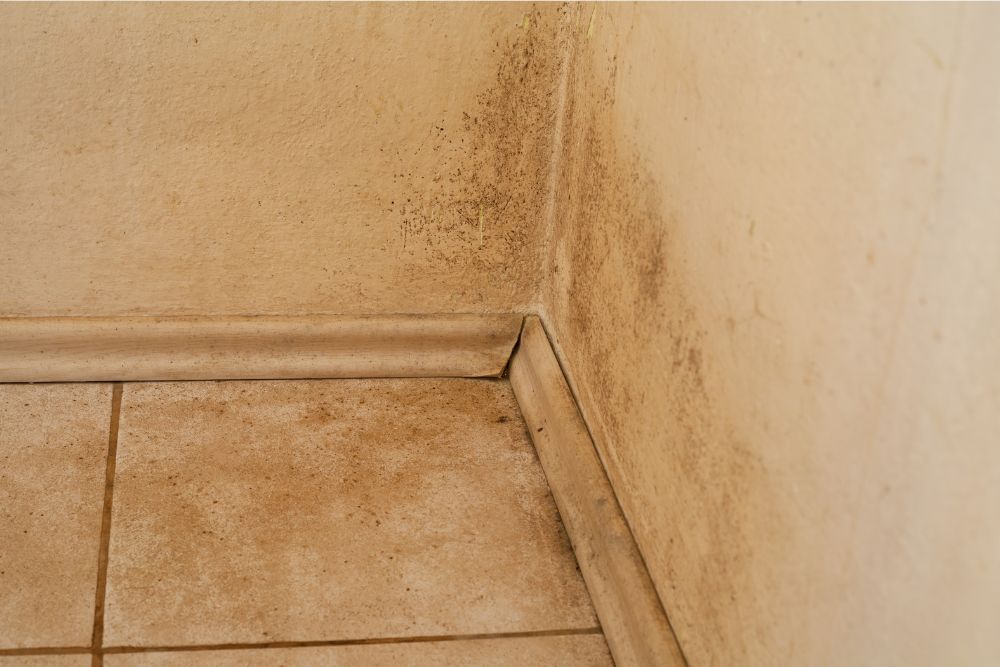
Rising damp is a common issue that plagues many homes and buildings. This problem occurs when moisture from the ground seeps up through the walls, causing damage and creating an unhealthy living environment.
But what actually causes rising damp? Well, there are several factors at play. In this post, we will cover the common causes of rising dampness and what you can do about it.
Common Causes of Rising Dampness
Poor Ventilation and Moisture Trapping
If you do not open your windows often and let fresh air circulate, moisture can get trapped in your home, leading to rising damp.
Poor ventilation is a common cause of rising damp because it prevents the excess moisture from escaping. When there is no way for the damp air to be replaced with fresh air, the moisture accumulates on the walls and floors, creating a conducive environment for rising damp to occur.
Activities such as cooking, showering and drying clothes indoors can also contribute to the moisture levels in your home. Without proper ventilation, these activities can lead to condensation and increase the chances of rising damp.
Therefore, it is essential to ensure adequate ventilation in your home by regularly opening windows, using extractor fans, and maintaining a balanced airflow to prevent the occurrence of rising damp.
Defective Damp-Proof Courses
To prevent defective damp-proof courses, you should regularly check for any signs of moisture seepage in the walls.
Damp-proof courses (DPCs) are horizontal barriers made of materials like slate, bitumen, or plastic that are installed in the walls to prevent moisture from rising. However, if the DPC is faulty or damaged, it can fail to stop the water from seeping up through the walls, leading to rising damp.
Common causes of defective DPCs include poor installation, deteriorating materials, or physical damage. Over time, the DPC can become ineffective, allowing moisture to bypass the barrier and enter the wall structure. This can result in damp patches, peeling paint, mold growth, and a musty smell.
Regular inspections and timely repairs of any DPC issues are essential to prevent rising damp.
High Ground Levels and Water Ingress
One common issue that homeowners may overlook is the impact of high ground levels on the potential for water ingress.
When the ground level around a property is higher than the damp-proof course (DPC), it can lead to the occurrence of rising damp. This happens because water from the surrounding soil can easily penetrate the walls, bypassing (otherwise known as “bridging”) the DPC, and causing dampness to rise up through the walls.
The excess water can also accumulate against the external walls, resulting in further moisture ingress.
To prevent this, it is crucial to ensure that the ground level is properly graded away from the property, allowing water to flow away from the walls. Additionally, installing a physical barrier, such as a trench or a retaining wall, can help to redirect water and prevent it from reaching the walls.
Plumbing and Drainage Issues
Faulty plumbing or drainage systems can contribute to rising damp by allowing water to seep into the walls and floors of a building. Leaky pipes, damaged or blocked drains, and inadequate waterproofing can all lead to the accumulation of moisture, which in turn can result in rising damp.
For example, if there is a leak in a pipe within the walls, water can slowly seep into the surrounding materials, causing them to become damp over time. Similarly, if the drainage system is not functioning properly, water can accumulate around the foundation of the building, increasing the risk of rising damp.
Therefore, it is crucial to address any plumbing or drainage issues promptly to prevent the occurrence of rising damp.
Building Construction and Materials
When it comes to building construction and materials, you’ll want to ensure that you choose high-quality products and techniques to avoid any potential issues with moisture seepage and damage to your home.
One of the main causes of rising damp is the use of poor construction materials or techniques that do not effectively prevent water infiltration. For example, if the walls of your home are constructed with porous bricks or mortar, they can absorb water from the ground and allow it to rise up through the walls.
Similarly, if the damp-proof course, which is a barrier designed to prevent moisture from rising, is not properly installed or is damaged, it can lead to rising damp.
Therefore, it is crucial to invest in good quality materials and ensure proper construction techniques to prevent rising damp issues.
What Causes Rising Dampness In Buildings?
The occurrence of rising dampness in buildings is primarily attributed to the upward movement of groundwater through capillary action in porous building materials. This phenomenon is commonly observed in older buildings or structures with inadequate damp-proofing measures. Capillary action refers to the ability of water to move against gravity through narrow spaces, such as the tiny pores in bricks, concrete, or mortar.
As the groundwater rises, it carries with it soluble salts and minerals present in the soil. These salts can accumulate within the building materials, leading to visible signs of dampness, such as water stains, peeling paint, or crumbling plaster.
Several factors contribute to the development of rising dampness in buildings. The absence or deterioration of damp-proofing materials, such as a damp-proof course (DPC) or a damp-proof membrane (DPM), can allow water to seep into the structure. Additionally, the level of the water table, the presence of high groundwater levels, and the type of soil surrounding the building can all influence the severity of rising damp.
What Causes Rising Dampness In a House?
Moisture infiltration from the ground into the lower levels of a building results in the upward migration of water, leading to structural and aesthetic damage. Rising dampness in a house can be caused by several factors, including:
- Faulty or absent damp-proof course (DPC): A DPC is a barrier installed in the walls or floors to prevent water from rising. When a DPC is absent or damaged, water can easily penetrate the building, causing rising dampness.
- High ground levels: If the ground level outside the house is higher than the internal floor level, water can seep into the walls and floors, resulting in rising dampness. This can occur due to poor landscaping or inadequate drainage.
- Capillary action: Rising dampness can also occur due to capillary action, where water is drawn upwards through porous building materials, such as bricks or concrete. This can happen when the building materials are in direct contact with wet or damp soil.
What Causes Rising Dampness In External Walls?

Rising dampness in external walls occurs due to various factors. One primary cause is the absence or failure of an effective damp proof course (DPC), which is a physical barrier installed in the walls to prevent the upward movement of moisture. If the DPC is damaged or not present, water can easily seep into the walls and rise through capillary action.
Additionally, high ground levels or inadequate drainage systems can contribute to rising dampness. When the ground outside the building is higher than the DPC level, water can penetrate the walls above the DPC and cause dampness. Poorly designed or blocked drainage systems can also lead to water accumulation near the walls, increasing the risk of rising dampness.
Furthermore, the porosity and permeability of building materials play a significant role in the occurrence of rising dampness. If the external walls are made of porous materials, such as bricks or stone, they can absorb and transmit water more readily, facilitating the upward movement of moisture.
What Causes Rising Dampness In Internal Walls?

One factor contributing to the presence of water in internal walls is the failure to implement proper waterproofing measures. This can lead to rising dampness, which can have detrimental effects on the structural integrity of a building. Below are four key causes of rising dampness in internal walls:
- Faulty or absent damp proof course (DPC): A DPC is a layer of waterproof material that prevents moisture from rising through the walls. If the DPC is damaged, incorrectly installed, or missing altogether, water can easily penetrate the internal walls.
- Capillary action: When the internal walls come into contact with the ground, water can be absorbed through capillary action. This occurs when the water is drawn upwards against the force of gravity, leading to rising dampness.
- Plumbing leaks: Leaking pipes or faulty plumbing fixtures can introduce water into the internal walls. This water can seep into the surrounding materials and contribute to rising dampness.
- Condensation: Poor ventilation and high levels of humidity can result in condensation forming on internal walls. Over time, this moisture can accumulate and contribute to rising dampness.
How to Resolve Rising Dampness
To address the issue of rising dampness, several remediation methods can be employed.
The best method is usually the installation of a damp-proof course (DPC), which acts as a barrier to prevent moisture from rising. This involves injecting a chemical solution into the walls or inserting physical barriers such as plastic or metal sheets.
Another approach is the use of waterproofing coatings or paints on the affected areas, which create a barrier against water penetration.
Improving the ventilation in the affected areas can also help in resolving rising dampness. This can be achieved through the installation of airbricks or vents, allowing for the circulation of air and reducing condensation.
Additionally, repairing any defects in the external walls, such as damaged render or pointing, is crucial to prevent water ingress.
It is important to identify the underlying cause of rising dampness before implementing any remediation method. This may involve conducting a thorough inspection to determine if there are any leaks, plumbing issues, or drainage problems that may be contributing to the moisture buildup.
By addressing these underlying issues, the effectiveness of the chosen remediation method can be enhanced, leading to a long-term solution for rising dampness in internal walls.
Frequently Asked Questions
How can I prevent rising damp if my home has poor ventilation and moisture trapping?
To prevent rising damp in a home with poor ventilation and moisture trapping, solutions include improving ventilation through windows or vents, using dehumidifiers, and installing damp-proof courses or membranes to stop moisture from rising through the walls.
Are there any signs or symptoms that indicate a defective damp-proof course?
Signs or symptoms of a defective damp-proof course include visible damp patches or staining on walls, peeling wallpaper or paint, musty odours, and a feeling of dampness or coldness in the affected areas.
What are some effective methods to address high ground levels and water ingress to prevent rising damp?
Some effective methods to address high ground levels and water ingress and prevent rising damp include installing proper drainage systems, maintaining gutters and downpipes, and ensuring the ground slopes away from the building.
How can plumbing and drainage issues contribute to rising damp, and what can be done to fix them?
Plumbing and drainage issues can contribute to rising damp by allowing water to seep into the walls. To fix this, it is crucial to repair any leaks, improve drainage systems, and ensure proper ventilation to prevent moisture buildup.
Are there any specific building construction materials that are more prone to causing rising damp?
Some specific building construction materials, such as porous bricks or poorly sealed concrete, can be more susceptible to causing rising damp. These materials allow moisture to penetrate and rise up through the walls, leading to dampness.
Do You Have Rising Dampness You Need Resolved?
We specialise in rising dampness remediation in Sydney for both commercial and residential buildings and can help you diagnose and resolve rising damp. Speak to our team today by calling
0432 899 026 or emailing info@smrbuilders.com.au and we’ll get your rising damp sorted!